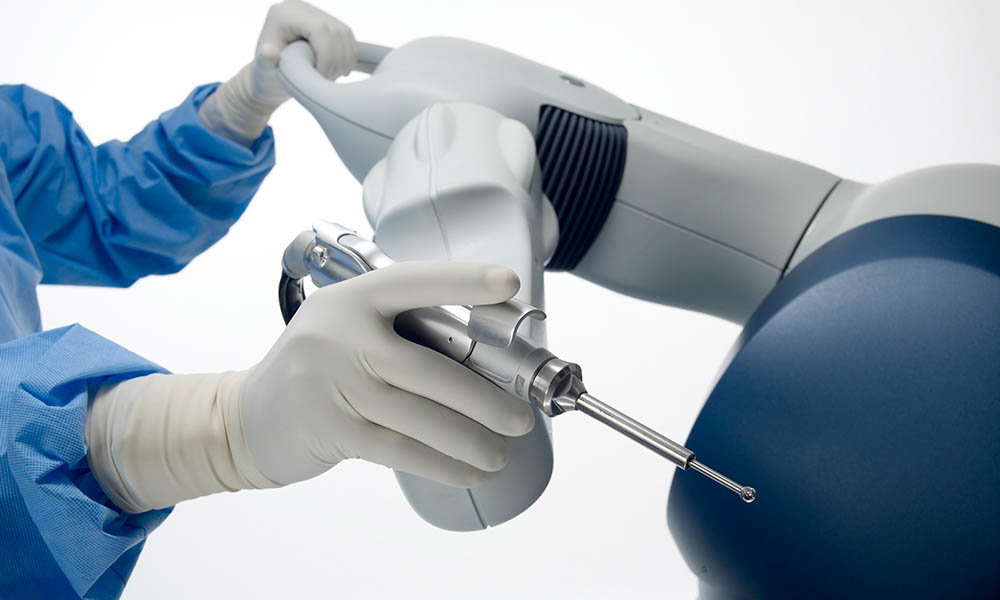
In the ever-evolving landscape of orthopedic surgery, the advent of robotic-assisted techniques has ushered in a new era of precision and efficacy. Robotic knee replacement surgery, in particular, offers surgeons advanced tools to optimize patient outcomes and quality of life. However, mastering this innovative approach requires specialized training and credentialing to ensure safety and proficiency.
In this article, we delve into the rigorous process of training and credentialing for robotic knee replacement surgeons, highlighting the essential steps and considerations along the way.
1. Understanding the Technology:
Before beginning their training for robotic knee replacement surgery, surgeons must first develop a comprehensive understanding of the technology behind robotic-assisted systems. This includes familiarizing themselves with the robotic platform’s hardware, software, imaging modalities, and intraoperative navigation capabilities. Understanding how to interpret preoperative imaging and utilize the robotic interface is crucial for effective surgical planning and execution.
2. Formal Training Programs:
Specialized training programs play a pivotal role in equipping surgeons with the knowledge and skills necessary to perform robotic knee replacement surgery safely and effectively. These programs typically consist of didactic lectures, hands-on workshops, and simulated surgical experiences using cadaveric specimens or virtual reality simulations. Experienced faculty members guide participants through the nuances of robotic-assisted techniques, emphasizing proper surgical technique, patient selection criteria, and complication management.
3. Proctorship and Mentoring:
Beyond formal training programs, proctorship and mentoring provide invaluable opportunities for surgeons to refine their skills under the guidance of seasoned experts. Proctors, who are experienced robotic knee replacement surgeons, oversee and assist with surgeries performed by trainees, offering real-time feedback and guidance. This hands-on experience allows surgeons to gradually transition from observation to active participation, gaining confidence and competence in robotic-assisted techniques.
4. Case Volume Requirements:
Many credentialing bodies and professional organizations establish minimum case volume requirements for surgeons seeking credentialing in robotic knee replacement surgery. These requirements ensure that surgeons have sufficient experience and proficiency before performing procedures independently. Surgeons may be required to document a certain number of observed cases, assisted cases, and independently performed cases to demonstrate competency and proficiency.
5. Credentialing:
Credentialing bodies, hospitals, and surgical centers may require surgeons to undergo specific training and evaluation processes to demonstrate proficiency in robotic-assisted techniques. This may involve written examinations, practical assessments, and peer review evaluations to assess clinical competence and adherence to best practices.
6. Continuing Education and Maintenance of Certification:
The field of robotic knee replacement surgery is continually evolving, necessitating ongoing education and professional development for practicing surgeons. Continued participation in advanced training programs, conferences, and workshops ensures that surgeons remain abreast of the latest advancements and techniques in robotic-assisted surgery. Maintenance of certification requirements may include completing continuing medical education (CME) credits, participating in peer review activities, and periodic reevaluation of surgical skills.
7. Ethical Considerations and Patient Safety:
Ethical considerations and patient safety are paramount throughout the training and credentialing process for robotic knee replacement surgeons. Surgeons must prioritize patient well-being, informed consent, and shared decision-making throughout the surgical journey. Maintaining high standards of professionalism, integrity, and transparency is essential for upholding the trust and confidence of patients and colleagues alike.
In conclusion, training and credentialing for robotic knee replacement surgeons is a multifaceted process that requires dedication, commitment, and ongoing education. By investing in comprehensive training programs, mentorship opportunities, and continuous professional development, surgeons can acquire the knowledge and skills necessary to deliver safe, effective, and patient-centered care in the realm of robotic-assisted orthopedic surgery.




